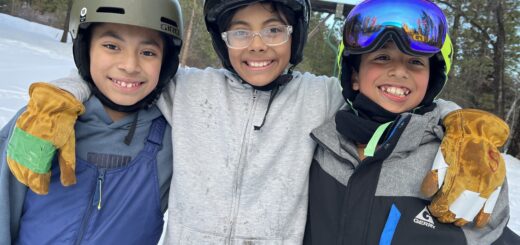Once a grizzly recovery skeptic, I’m changing my tune on the issue
When it comes to the question of whether we should reintroduce grizzly bears into the North Cascades, I have been a skeptic. My hesitance was based on a personal preference of avoiding encountering grizzlies while enjoying the backcountry — a vote for personal comfort.
Gordon Congdon Jr., the former Chelan-Douglas Land Trust executive director and a passionate advocate for bear reintroduction, organized conversations with grizzly bear expert Dr. Chris Servheen — talks hosted by the Wenatchee Valley Museum and Cultural Center in conjunction with the National Parks Conservation Association.
Servheen is the co-chair of the North American Bears Expert Team and vice president of the Montana Wildlife Federation.
After Servheen’s talk and another by local grizzly bear expert Bill Gaines, my perspective on the issue is changing. I am convinced there are some compelling arguments for reintroducing grizzly bears that I had not considered.
We have been conditioned by sensational news media coverage of bear attacks to believe that these bears pose a grave risk to humans, when in fact the risk of such attacks is quite low and almost entirely avoidable when backcountry users take appropriate precautions — such as hanging food away from camp, carrying bear spray and making noise when visibility is limited while traveling in bear country.
One benefit I hadn’t considered in reintroducing grizzlies is that their presence in the wilderness enhances our experience of these wild lands. Wilderness users have to respect the fact that grizzlies may be present and stay highly attuned to staying safe. When people see grizzlies in the wild, those moments are indelibly imprinted in their minds as an awe-inspiring experience, Servheen said.
This perspective resonates with me. I get frustrated living in a society that is too often fixated on eliminating all of life’s risks and can see the value in experiencing the outdoors with greater intensity. “I think grizzly bears bring a lot of awareness to us and they make that (wilderness) a lot more alive and and a lot more thrilling to us,” Servheen said.
Another point Servheen raised is that grizzly bears in great numbers have been coexisting for decades in parts of Montana with minimal conflicts, although there are occasional bear attacks on humans or livestock. Those responsible for bear management don’t want livestock to be preyed upon and will either move or in some cases kill nuisance bears, Servheen said.
The success elsewhere should give us reason to consider recovering them in the North Cascades.
Also important to know is that under the proposed management plan, reintroduction of grizzlies in the North Cascades would happen slowly – a few bears at a time in a landscape the approximate size of Massachusetts. It would take half a century to achieve a maximum number of 280 grizzlies, so the chances of seeing a grizzly would be extremely remote.
Even so, we would have to change our behavior as outdoor users. “We, as the dominant species out here, have to have to stretch a little bit sometimes to accommodate things that may not be so comfortable to us,” said Servheen. “In doing so, we increase the value of the places where all of the animals are present. We happen to live in one of the few places that are capable of supporting grizzly bear reintroduction. This idea has been discussed and analyzed for decades and the North Cascades Ecosystem was put on the list of potential sites for bear recovery in the late 1990s.
Critics say we should let bears come back on their own, but with so few nearby bears, that solution isn’t realistic.
Congdon is hopeful the federal effort to recover grizzlies will be restarted. “But we need more than the support of the federal agencies,” Congdon told me. “For grizzly recovery to truly be successful we need a broad partnership of federal, state, and local agencies and a broad coalition of hikers, bikers, hunters, ranchers, horseback riders, backpackers, and people living near the North Cascades to support grizzly recovery,” he added.
More community conversations on this topic are needed. This would be a significant change in our region but one that brings some important social and environmental benefits. We just need to go into it with eyes wide open.




